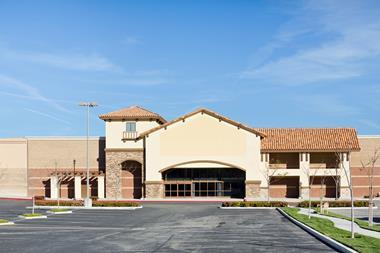If you ask risk managers for a public statement on how they are coping with the recent hard market, “pretty well” is usually the reply. But these are the risk managers who are willing to put their names to a quote.
The ones that want to speak off the record say the picture is not so bright. Their comments suggest their good claims records have counted for little, there have been few rewards for higher retentions and, in some cases, insurers now view them as operating in undesirable industries.
Nick Chown, risk management head at Consignia, is in the positive corner. He started negotiations early and has a mature, well-used captive. “People who have been in the market for a time know this isn’t the first hard market and it won’t be the last.
Another risk manager is less philosophical. “The conventional insurance market has given every indication of not being able to offer sufficient cover to certain market sectors,” he complains. “We have to accept restrictions in the level of coverage.
Whatever the opinion, the market climate is well summed up by Alastair Nicoll, senior consultant at Aon IRMG, as “increased deductibles (up to 10 to 20 times), increasing premiums (100% to 900%) and lower limits”. And Association of Insurance and Risk Managers chief executive David Gamble says that this situation has led to a change in the status quo. “What everyone is recognising is that they will only get the cover they seek by having excellent risk management programmes in place, by having extremely good documentation, by going to the market as early as possible and making sure the underwriters are comfortable with them as a risk. I think that’s a huge change in a relatively short time - the buyer of insurance is now the supplicant, whereas before it was the other way around.
Gamble explains that, as a result, some long-term partnerships have been strained. “In some cases, peoples’ relationships have proved to be a lot weaker than they thought. You are getting very senior people in the insurance company directing people to do things, and a lot of the troops are unhappy because it damages relationships.” Nicoll agrees. “I’m not sure the underwriters have been all that helpful to companies with good risks. Mandates come down from on high, despite good relationships and good historical records.
Not that this is always the insurers’ fault, according to one risk manager. “Their relationships relied on the reinsurance the insurer was able to purchase. Now it’s the backseat driver who is calling the shots.
Martin Fessey, FM Global’s business development and European market director, says that some insurers are working to reduce the impact of this trend. “The intense activity in the market recently has led both corporates and insurers to re-examine the way they put together insurance programmes. We’re constantly investigating ways to ensure we can maintain successful partnerships with our customers and reinsurance suppliers.
Captive interest
So where are risk managers turning when their relationships don’t bring the cover for which they hoped? David Hertzell, operations partner at Davies Arnold Cooper, suggests that there are three real options – higher retentions, captives and protected cell companies (PCC). Some corporates are choosing higher retentions because of the tax and cost implications of captives and PCCs, others because their claims history does not lend itself to other options. However, Hertzell, the chairman of AIRMIC’s special interest group on captives, says that interest in captives has risen sharply with the hardening market. “They suit companies that don’t want to carry their own risk, but whose claim record is such that they could outperform the general market.
However, Hertzell stresses that forming a captive is not an exercise that can be rushed. “The truth is, if you want to get the most out of having a captive, you should have done it some time before the market hardened and paid slightly over the odds.”
Nicoll also points out the logistical problems involved. “The normal captive formation period is often longer than the period to renewal. Unless the clients are well prepared it can prove impossible to offer a viable alternative risk transfer vehicle in time.” Or, as one risk manager succinctly put it: “You can’t switch from self-insuring attritional risk to self-insuring catastrophic risk that easily, because it has an important impact on how capital is deployed within a corporate”.
Risk managers for whom a captive is not a viable option are looking carefully at PCCs and rent-a-captives. These are popular because of the reduced amount of capital needed to set them up, the shorter formation period and lower operating costs.
Steve Butterworth, insurance director at the Guernsey Financial Services Commission, introduced PCCs to Guernsey in 1997. The Cayman Islands, quickly followed. Now Butterworth says interest in PCCs is increasing all the time, from all sides.
“From 1997, it’s gone from strength to strength and very few companies coming to Guernsey now set up captives; it’s mainly PCCs. All sizes of company are interested, because even large companies don’t want to pay the cost of capital, or want to divorce themselves completely from the risk.
The Isle of Man is at Guernsey’s heels, with plans to pass legislation allowing the formation of PCCs by July. In the meantime, it allows rent-a-captives, which only differ from PCCs in that they are not protected by statute. Roger Hara, underwriter at Willis Management (Isle of Man), has received numerous inquiries since the market hardened. “We’ve had calls from multinational companies and regional corporates. And we’ve put together solutions covering everything, starting from the basics where people ask ‘what is a captive?’ to sophisticated risk financing structures, where a captive has played a crucial part.” However, Hara reiterates that captives are not short-term solutions to insurance market fluctuations. “Captives are long-term risk financing tools that, when used over time and in all market conditions, will help a risk manager maintain stable risk financing costs in the long term.
How long?
That is all very well, but what if you failed to think ahead? How long is this market likely to last? There are two schools of thought. One risk manager puts it thus: “Some people say a year or two; others say, with the capacity coming in, it will be less. The new capacity is definitely there, but they’re being very selective about to whom they give it. For people in what the insurance market views as the riskiest industries, I see life continuing to be difficult for at least a year.
Others are more upbeat about the effects of the hardening market, saying it has brought business continuity planning to the fore and emphasised the importance of good communication between risk managers and their finance directors. Gamble says he does not expect a clearer picture of how the market will develop for at least two months. Meanwhile, Fessey’s ‘continual investigation’ of solutions seems to be the way forward most have chosen.
Christine Seib is a StrategicRISK reporter
AIRMIC COMMENt
Even before the attack on New York’s World Trade Center, there were clear signs that the insurance market was hardening, particularly for property and casualty risks, says David Hertzell, chairman of AIRMIC’s special interest group on captives. “Following the attack, insurers, reinsurers and retrocessionaires have examined both the terms and the extent of the cover they are providing. Reinsurance renewals will have been harder this year, particularly where global risks are concerned, and premium increases and policy restrictions will spread throughout the insurance chain.
“In this new market, insureds will be improving their risk management and examining their risk financing alternatives. As we have already seen, there will be pressure for government assistance to solve high risk and strategic problems such as aviation insurance and terrorism cover itself. In other business areas, insureds will be considering an increase in pure self-insurance and where appropriate investment in self-owned mutual insurance vehicles. Another tried and tested method of dealing with hard market conditions is the use of captive insurance. The insured or parent can create its own insurance vehicle to deal with non-catastrophic risks such as increased deductibles, and use this if appropriate to access a wider insurance marketplace including reinsurance.
“Although these solutions are generally the children of a hard market, A M Best has reported a consistent growth in the number of captives of between 4.5% and 5.5% over the past few years, with an acceleration of growth in 2000. These new companies and the large number of existing captives which have been left to tick over during the soft market are likely to receive increased attention from their parent company, particularly if funds have been built up over past years. Despite the soft market, there has already been risk financing innovation in the major captive domiciles including the development of finite risk products and the PCC (a form of joint captive in which some costs are shared but liabilities are segregated). These have increased flexibility and reduced cost. Renewed interest in a harder market will undoubtedly see further innovation and a greater acceptance of captive insurance as a risk financing solution amongst a wider range of insureds.
“The attitude of governments and super national bodies such as the EU to these developments is, however, still somewhat ambiguous. Governments, and particularly treasury departments, have a suspicion of offshore financial arrangements, and tax legislation in most developed countries has been increasingly less favourable and more restrictive towards captives and captive owners. Insurance taxation is also a soft target.
However, governments have an aversion to becoming involved in the insurance business, whether as an insurer of last resort or otherwise, and they might be unwise to stifle the development of valid insurance-based alternatives.
“Insurers too can have an ambiguous approach to captives. Owning a captive usually shows that the parent is a good risk and, if used to write lower layers, a captive will lift the insurer away from attritional claims. However, a captive will be taking premium out of the commercial marketplace at a time when rates are hardening. Insurers will also now be seeking better terms if they are fronting for a captive and will be increasingly choosy about such arrangements.”


















